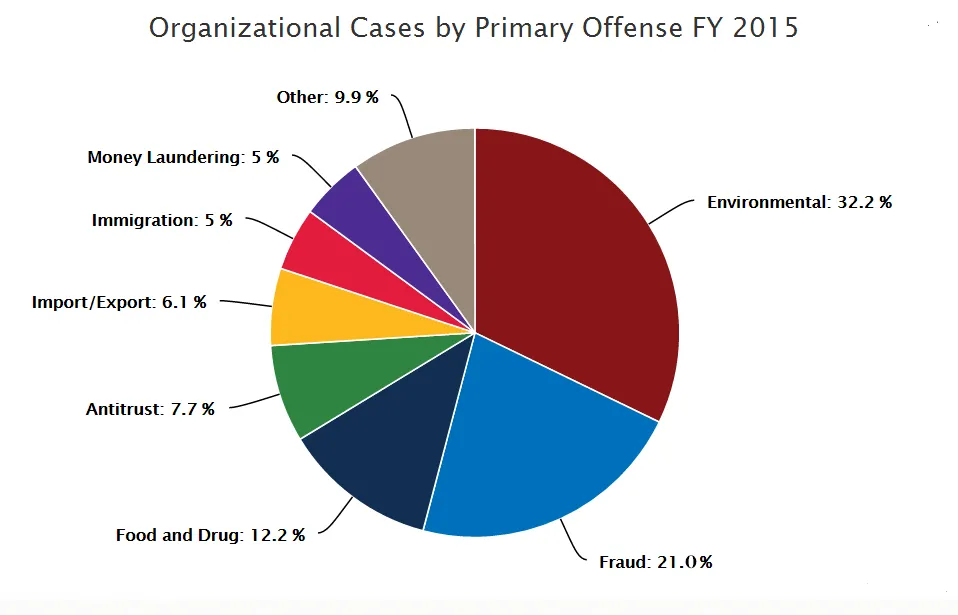The most common federal offense committed by “organizational offenders” —corporations, partnerships, unions, trusts, pension funds, and non-profits—was not fraud or money-laundering but environmental crime, according to a report published recently by the U.S. Sentencing Commission.
Environmental offenses made up nearly a third (33.2 percent) of all crimes committed by organizations, followed by fraud at 21 percent and food/drug crimes at 12.2 percent (crimes involving adulteration or misbranding of drugs), the commission reported last month. Crimes involving antitrust actions, import/export issues, immigration, money laundering, and other categories made up the remainder of the offenses.

Broken down, 70 percent of the environmental crimes were water-related, 16.7 percent affected wildlife, 8.3 percent involved hazardous materials, and 5 percent were air-related.
The commission, an independent agency in the judicial branch that monitors federal sentencing, studied 181 organizations convicted of a federal offense in fiscal year 2015. It found that the rate of organizational crime is on the rise, going up nearly 12 percent from fiscal year 2014. Most of the organizations studied were owned by private entities, such as corporations (46.5 percent) and limited liability companies (27.5 percent).
Unlike individuals, organizations cannot be imprisoned and are instead subject to fines, restitution orders and other forms of punishment. Organizational sentencing guidelines are designed to both punish and deter. That is, punishments escalate with the severity of the crime and the guidelines build in incentives for organizations to change their behavior, such as requiring that they develop compliance and ethics programs.
The vast majority of organizations charged with crimes — 97.8 percent — pled guilty to the federal charges in fiscal 2015. Seventy-nine percent were ordered to pay a fine, restitution, or both. The average fine was nearly $23 million, and the average restitution amount was $19 million. Usually as a condition of probation, 28.2 percent of all organizational offenders were ordered to develop compliance and ethics programs.
Over half — 58.6 percent — of all organizational cases involved a related individual who was convicted separately.
Subscribe to News Updates
Subscribe to be notified when the news section is updated.
